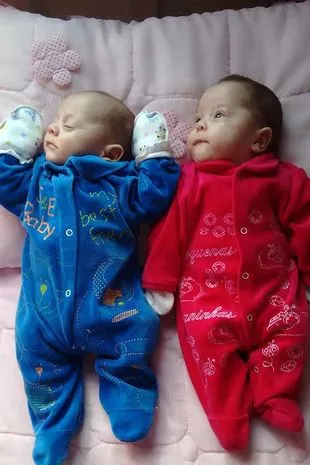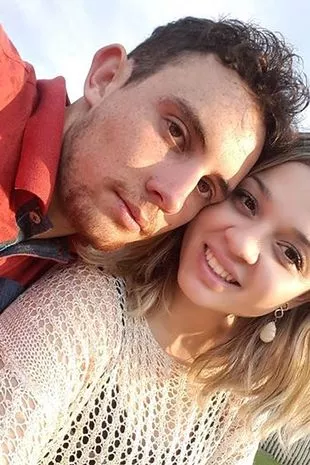Frankielen da Silva Zampoli Padilha, was kept alive for an unprecedented 123 days after being declared brain-dead so her unborn twins could survive. This heart-wrenching and awe-inspiring tale of modern medical science, human endurance, and unwavering hope unfolded at the Nosso Senhora do Rocio hospital in Campo Largo, Brazil.
The Stroke That Changed Everything
It all started in October when Frankielen, just 21 years old and nine weeks pregnant, complained of a severe headache and neck pain. Her husband, Muriel Padilha, rushed her to the hospital. As they drove, Frankielen, shaking, crying, and vomiting, delivered her last words: “I want you to be prepared to accept this because I will be staying there, I won’t be coming home.”
Customer leaves a generous $3,000 tip on $13 food bill. Then, the restaurant decided to sue him
She never did. Doctors discovered she had suffered a massive cerebral hemorrhage. Three days of tests later, they confirmed the devastating news: Frankielen was brain-dead. But amidst the grief, a sliver of hope emerged. The twins’ hearts were still beating.
The Decision to Keep Her Alive
At nine weeks pregnant, the odds weren’t in favor of the embryos surviving without their mother. The doctors prepared Muriel for the worst, telling him they would give the twins three more days, expecting their tiny hearts to stop. But the babies clung to life.
Dr. Dalton Rivabem, head of the neurological ICU, spearheaded a groundbreaking decision: the medical team would keep Frankielen alive, using machines to sustain her bodily functions, and provide her babies a fighting chance.

A Team Effort for a Miracle
It was a bold move. Keeping a brain-dead woman alive for over four months while her babies grew inside her was medically complex. It took a multidisciplinary team of doctors, nurses, nutritionists, physiotherapists, and many more to maintain Frankielen’s body in a stable condition. They worked tirelessly to ensure her organ functions were optimal, providing the necessary environment for the embryos to develop.
This wasn’t just a technical operation. The hospital staff took it upon themselves to fill the void left by Frankielen. Every day, they sang to her belly, caressed her pregnancy bump, and even decorated the room with her pictures. They wanted the babies to feel the love and care of their mother, even though she was no longer conscious.
Erika Checan, a chaplain and music therapist at the hospital, said, “We found children’s songs and played them to the babies in the womb. We made up tunes exclusively for them and filled the ICU with love and encouragement.”
The support extended beyond the hospital walls. People across Brazil rallied behind the family, donating clothes, diapers, and money to help care for the babies. The story had touched hearts everywhere, and no one wanted to see those babies go without.
The Birth of Ana Vitoria and Asaph
In February, at seven months gestation, the time came to deliver the babies. An emergency caesarean section brought them into the world: a baby girl, Ana Vitoria, weighing 1.4 kg, and her brother, Asaph, at 1.3 kg. Both were born with the typical health challenges of premature babies but were otherwise remarkably strong.
The hospital staff who had worked day and night for 123 days to keep their mother alive were brought to tears at their birth. “We cried when they were born,” admitted Dr. Rivabem. The staff had grown attached to the babies they had nurtured for months, watching their progress closely with daily ultrasounds and hemodynamic monitoring to ensure they were developing normally.
The twins were kept in incubators for three months to gain strength and stave off infection. It was a delicate process of building their tiny bodies up after spending their entire gestation in such unusual circumstances. But against the odds, they thrived.

A Family Rebuilt
Frankielen’s mother, Angela Silva, now cares for the twins while Muriel works to provide for his expanded family. “I’m so proud of my daughter,” Angela said. “It’s been hard losing her, but she was a warrior right until the end, protecting her beautiful children and giving them life.”
Muriel, though grieving, finds comfort in his children’s survival and the love that continues to surround his family. He has spoken of visions where his wife visits him, reassuring him that he must move on and take care of their children. “She told me, ‘You’ve got a big mission still to complete. You have to look after our children, and you have to be strong and live your life,’” he said.
A Medical Marvel and a Test of Faith
This case has already been documented as the longest period in which a brain-dead mother was kept alive to ensure the survival of her unborn children. While medical science certainly played a monumental role in this outcome, the doctors and staff credit something more: divine purpose. They believe the case was meant to happen, that it brought out the best in everyone involved.
A Story of Unimaginable Strength
Frankielen’s story resonates on multiple levels. It’s a reminder of the incredible lengths people will go to in the name of life. It’s a testament to the power of love, not only from a family but from an entire community. And it shows how medical science, faith, and human resilience can come together in the most extraordinary ways to produce miracles.
As Frankielen’s family moves forward, her legacy lives on in her twins, Ana Vitoria and Asaph—two little fighters who now represent the strength and determination of their mother, even in death.
Final Thoughts
This remarkable story is proof of the unbreakable bond between mother and child. If you want to follow more inspiring stories or contribute to families like Muriel’s, consider sharing this post and staying updated with medical marvels and human endurance stories. Let’s keep the conversation going—because stories like these remind us that hope exists, even in the darkest moments.

